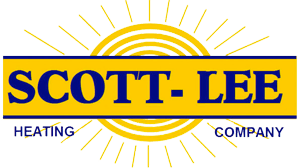March 8, 2018
Proper insulation can go a long way in increasing your home’s energy efficiency.

The best way to build a home is to anticipate effective energy efficiency by making sure that your home is built with insulation from top to bottom. It isn’t just about keeping costs low when you are in the building phase, but also about considering how the moves you make can reduce your energy costs. If you didn’t put enough thought into insulation, or you are finding that what you did was not enough, the good news is that there still ways you can increase efficiency and decrease the wear and tear on your HVAC system. Here are three ways to insulate that can help to cut your energy costs and keep your home comfortable in both the summer and the winter.
Injection Foam
Fiberglass is usually the preferred way to insulate your home, rather than foam. Highly mold- and mildew-resistant, it is a great product to use when you are in humid conditions. However, if the fiberglass wasn’t enough, or if you failed to insulate sufficiently, then you can go back and use injection foam. It isn’t like blown-in cellulose, because it expands to cover the space where you inject it – which means that it can generally make its way around pipes and wires without pushing against anything or being so forceful that it can risk damaging things behind the walls.
Fiberglass
If you didn’t put in the appropriate amount of fiberglass insulation in the beginning, it might seem like a huge hassle to start pulling things out – but in some circumstances removing the drywall to roll in more fiberglass could be well worth the benefit in the long run. It’s not the best alternative because there is a lot of disruption to your home, and in some instances, it may not be the best choice to beef up your insulation unless you are already going to be pulling walls out anyway.
Blown-In or Loose-Fill Insulation
If you don’t want to start ripping your house apart, then you might want to consider blown-in or loose-fill insulation. The latest trend is paper product insulation. It might not sound very economically sound, but it is eco-friendly and it’s a great alternative to getting behind the walls. Blown-in cellulose typically requires that a professional inject the insulation behind the walls by drilling small holes. Blown-in insulation can be blown into the attic to keep the heat in or the cool out.
If you didn’t insulate well enough during the construction of your home or dwelling, or if you bought someone else’s home, the good news is that it is never too late to undo a lack of insulation. These three methods can increase your energy efficiency, cut down on your monthly energy bills, and save your HVAC system from needless wear and tear.
If you are concerned about the costs of heating and cooling your St. Louis home, give Scott-Lee Heating Company a call 24/7 at (314) 756-9444.
